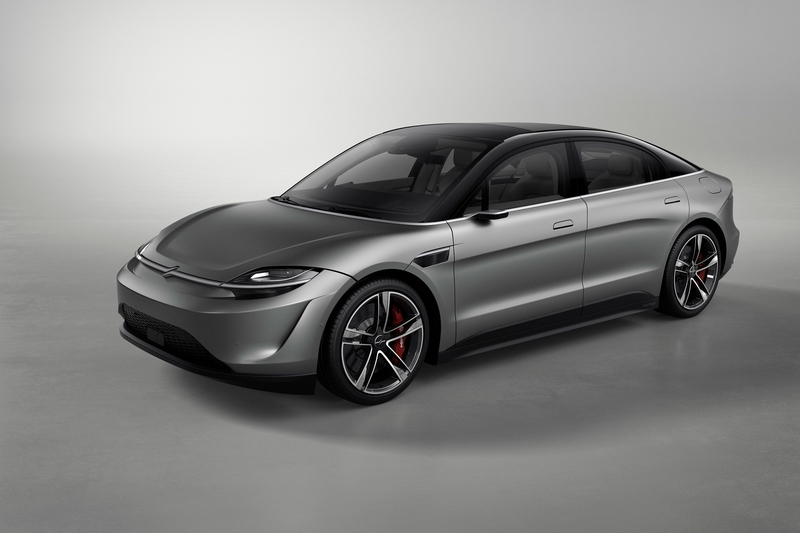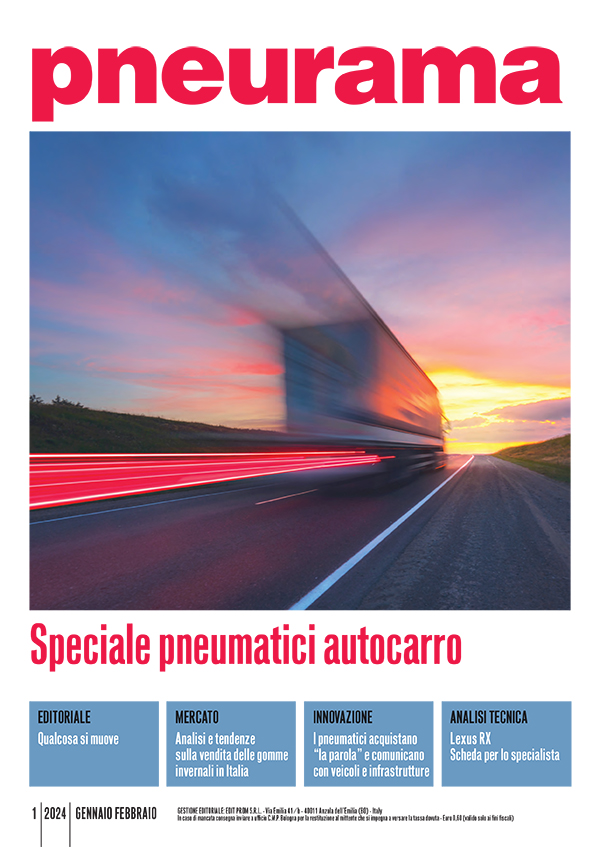Double trouble: chip crunch and very little is being done on “green policies”
Italy, compared to other large European markets, lacks a strategic plan to support the sector

Kenichiro Yoshida, president and CEO of Sony, following the presentation of the first prototype car designed by the Japanese hi-tech company at the Ces in Las Vegas, gave a personal forecast of the technological trends that will govern the near future: "it is no exaggeration to say that the mobile technology has been the most significant trend in the last ten years. In my opinion, mobility will be next". A presentation that impressed most of the public: not only because insiders expected a special focus on what would probably be the latest model of a famous gaming console, but also because of the peculiarity of the product presented. It was hard to imagine, in fact, that a company traditionally dedicated to developing electronic games and devices would have tried its hand at the development of a vehicle. A full electric vehicle that contains the best of the Japanese giant's technology in terms of on board safety and entertainment. As Yoshida pointed out "we believe that as mobility evolves, cars will also be redefined as a new space for entertainment". For the moment the Vision S - this is the name of the car - is only a prototype and at present it looks unlikely that Sony and the partners who worked on the project will be willing to start any kind of real production. The Vision S comes across an idea of what a future car could look like, where automotive and IT bring together their respective knowledge and expertise. Analysts and experts in the sector agree that in this year’s edition, both two and four-wheelers occupied a prominent position within an event traditionally dedicated to consumer electronics held in Las Vegas from 7 to 10 January. Within the exhibition, which during its more than 50 years of history represented the perfect setting to launch some of the electronic goods that have characterized our everyday life, the growing interest around the development of technologies designed to make driving a real 360° experience did not go unnoticed. And, in fact, companies in the automotive sector have taken advantage of the opportunity offered by the CES - already included by some in the list of industry events not to be missed - to talk to the world about their vision and the mobility of the future. Alongside car makers, around 150 companies dedicated to the development of car technologies were also present. Ample space was devoted to connectivity, to systems that increasingly bring people closer to autonomous driving, not to mention on board safety (a vital issue for the entire sector).
Bridgestone for the first time in Las Vegas
The Vegas Consumer electronics show saw, for the first time, the participation of Bridgestone. The Japanese giant presented what the company itself has called an "interactive showcase". "Ces is a unique opportunity for Bridgestone to show the world how we are becoming the reference partner for mobility solutions," commented Bridgestone's vice president, senior officer, global chief strategic officer, TJ Higgins. "Bridgestone has a 90-year history of technology and research aimed at developing advanced products, services and solutions for an ever-changing world. Looking to the future, we are able to combine our tire manufacturing expertise with a wide range of digital solutions. Our aim is to create products and services designed for an increasingly sustainable and safe mobility and make a real contribution to the development of the society in which we live," concluded the manager. Three are the products that the Japanese manufacturer unveiled for its first appearance in Las Vegas. First of all, airless tires: not exactly breaking news, at least for insiders, but certainly a product that sums up the research work carried out by the company in recent years. Within the range of airless tires - characterised by a highly resistant tread and structure - Bridgestone showcased a highly elastic concept designed for a lunar Rover under development, which will be used in an international space exploration mission. At CES, everything revolves around technology, and as a result, Bridgestone showed the possible applications in the tire sector. The second concept presented was the so-called "digital twin". At present, vehicles are not yet able to detect what happens as a result of the interaction between the tire and the road, which is one of the obstacles in the development of a fully autonomous vehicle. Bridgestone uses its “digital twin” technology to fill this gap. Through the use of this technology and connected tires it is possible to generate specific predictions, which would lead to an improvement in the vehicle's safety systems. Finally, the Japanese manufacturer brought also its Webfleet Solution platform. Once again, not an absolute novelty, but useful to show the general public the practical implications of technology applied to fleet management. Viewers, in fact, appreciated how the Webfleet platform is able to help vehicles move efficiently - and safely - by exploiting the collection of statistical data.
Sustainability, connectivity and safety: the mobility of the future according to Continental
For Continental, on the other hand, participation in the Vegas show was planned around concepts of sustainability, connectivity and safety. "Our philosophy is 'Mobility is the Hearbeat of life'," said Alessandro De Martino, CEO of Continental Italia. "Ours has always been a holistic approach that considers the road as an ecosystem and develops intelligent and innovative solutions to ensure that all its users do so with the utmost safety. At CES we presented unique prototypes and cutting-edge infotainment, connectivity and safety systems," explained De Martino. Continental, in fact, means more than just tires. The German company develops also technologies that make vehicles and roads safer. An improvement in terms of security is at the heart of the development of the Transparent Hood, a screen that allows a driver to “see” under the hood through images collected and processed by a Surrond View system, which consists of four cameras. This allows a driver to keep an eye on the ground, under the car, identifying any potholes or other potential dangers. Still on the subject of safety, Continental presented the new Contact Sensor Sysem - CoSSy - which allows to detect potential low-speed impacts between a vehicle and a person or object by processing sound signals. Among the various applications, this system would make it possible to detect, for example, the risk of aqua-planning, processing the sound produced by water hitting the vehicle on rainy days, or the presence of approaching rescue vehicles.
On the broader topic of mobility, the German group presented a holistic human-machine interface solution, specifically designed for self-driving vehicles, and created with the intention of establishing a "dialogue" (paradoxical as that may seem) between man and machine. The system will facilitate booking your seat on board a shuttle via a smartphone app that will give you the possibility, among other things, to constantly monitor the route of the arriving vehicle. And that's not all: as the shuttle moves along the route, it will be possible to view points of interest and updated information, for example, on cultural or social events. Staying on this topic, the Smart City Mobility and Transportation Hub project in Auburn Hills was also presented: the project consists of two intersections made intelligent thanks to sensors, short-and-long-range radar and software integrated into an infrastructure that processes the data. This would improve traffic flows, reduce pollution and improve safety, as the system would be able to communicate possible dangers to pedestrians and connected vehicles. Furthermore, the Wrong Way Driver system alerts drivers to the presence of a vehicle travelling on the wrong side of the road or against the traffic.
Goodyear invests in service and sustainability
The use of technology to provide comprehensive, ongoing and efficient service and support is the principle behind Goodyear's new AndGo platform. The company's service platform, which is currently only available in the US, will enable fleet vehicles to be serviced through the use of predictive software and a US-wide service network. The goal? To allow rental and car sharing fleets to be always on the move. The strength of the platform is its ability to monitor the services required, so that maintenance work can be scheduled and vehicle downtime minimized. According to Richard Kramer, President and CEO of Goodyear, AndGo is "yet another Goodyear innovation that will help transform the mobility of today into the mobility of the future". But that's not all: it was also announced that Goodyear Ventures, a venture capital fund, will have $100 million to invest in mobility solutions over the next 10 years. As Kramer pointed out again, through collaborations with other industry leaders, from small start-ups to proven business models, Goodyear aims to "shape the way people will move in the future". A concrete commitment towards a sustainable future, which involves working with other innovative companies.
Italy, compared to other large European markets, lacks a strategic plan to support the sector
Ten million fewer vehicles produced and rising car prices from 2022
Lots of vehicles, lots of tires: this is how commercial fleets could be described. It is a fact that the silver medal on a hypothetical podium of the major fleet expenses goes to fuel costs (the gold medal goes to salaries), which are notoriously linked to tire pressure
